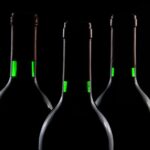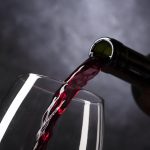Outside the Eastern United States wine regions, cabernet franc can be hard to find.
If you look for versions from Europe, you have to know how to decode the bottle, because it often won’t tell you.
In a store, you are just as likely to find cabernet franc mixed into the “cabernet” section as you are in “other reds.” Aside from a few Pennsylvania and New York versions, I found that cabernet franc is seldom seen in Pennsylvania.
The same cold winter edge that made cabernet franc doable in the cooler regions of the United States made it one of the major red wine grapes in the Northern French region of Loire, the only traditional winemaking region where you are likely to find 100% cabernet franc, made under the name of small villages where it is the red wine of Chinon and Saumur.
When you are in an also-ran region of France, you take risks to stand out. In Loire, one of those risks is wild yeast fermentation and all that comes with it. Wild yeast-fermented wines can be a hard sell when words that describe them include “barnyard,” “randy,” “Band-Aid” and “manure,” all in a good way that adds richness and complexity — until it does not. The shorthand for this sort of characteristic is “brett,” not for the male name but rather as shorthand for the wild yeast often that’s responsible, brettanomyces.
If you like brett, you’d have a hard time finding a better example than Les Caves de Rabelais “Fauteuil Rouge” 2018 Chinon. Some may find it off-putting, but I find brett well deployed in this tangy wine full of raspberry with a hint of oak, bitter chocolate and balsamic, plus a brush of mature tannins with a zingy finish. $16. ♦♦♦♦
You have to hit some off-the-beaten-path places to find 100% cab franc, such as Carcassonne, a medieval city between Toulouse and Montpelier in the sprawling, catch-all region of Languedoc, a region flexible enough where almost anything goes. Laroque 2018 Cite De Carcassonne Cabernet Franc is something of a juice bomb compared to the Chinon, with red raspberry and cranberry plus a tight finish. $10. ♦♦♦ 1/2
I’ve had some great cabernet franc from the tiny Spanish region of Priorot, and Chile makes a range of interpretations. Also, if you ever see a cabernet franc from Napa Valley or Northern California, it’s worth a try.
While it shares a name and some genes with big ol’ cabernet sauvignon, cabernet franc remains, unfortunately, far from the footlights, but it’s often worth seeking out.
GRADE: Exceptional ♦♦♦♦♦, Above average ♦♦♦♦, Good ♦♦♦, Below average ♦♦, Poor ♦

David Falchek executive director of the American Wine Society, reviews wines each week. Contact: dfalchek@gmail.com



